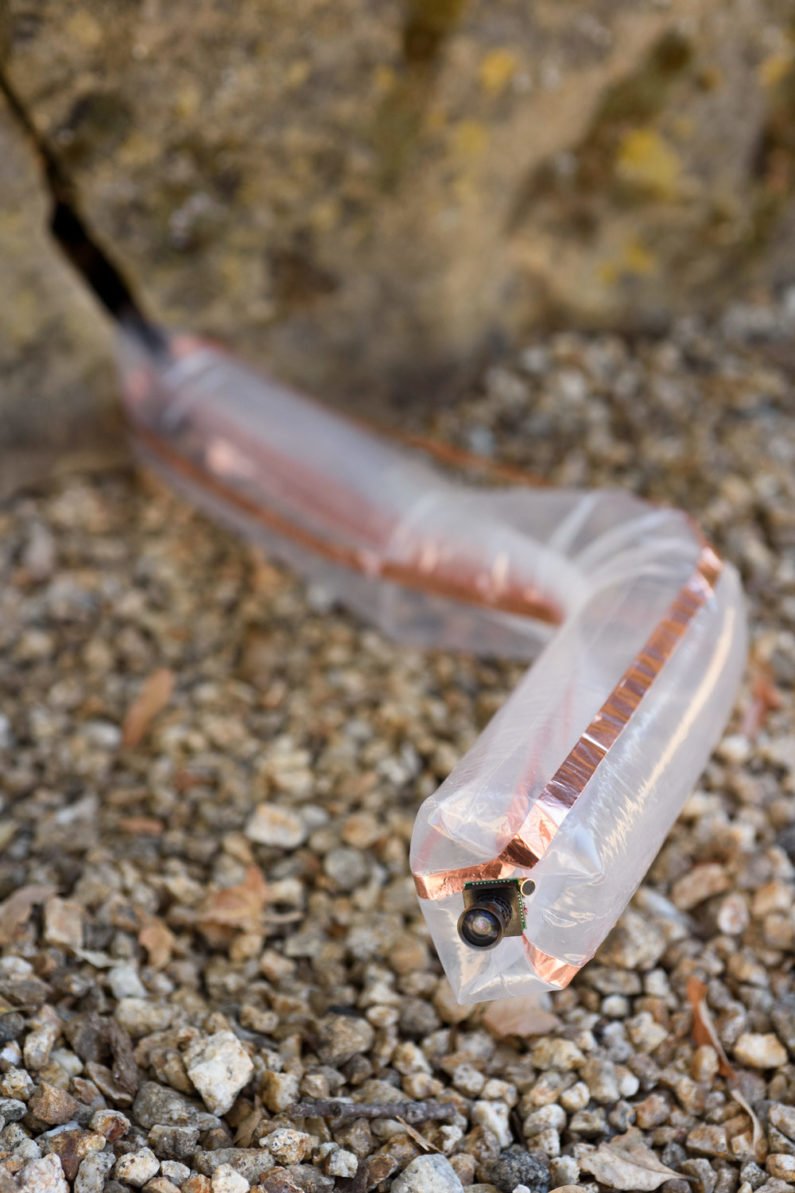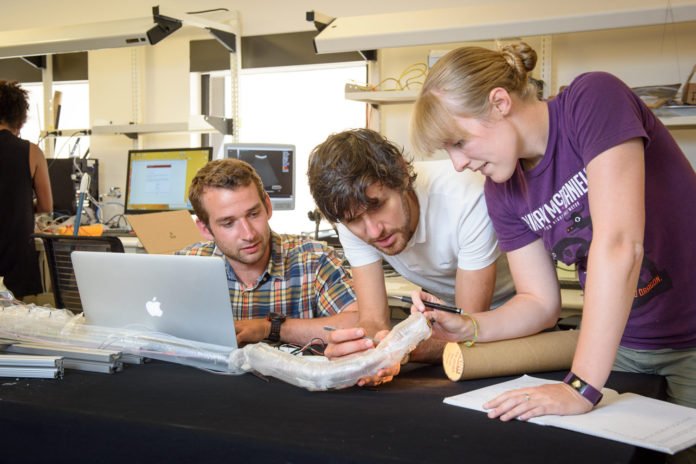Mechanical engineers at Stanford University have developed a new type of robot that mimics as rescuers searching for people in the rubble of a collapsed building. To bring out a small, they just placed a small, they developed this robot from air tight cylinder.
Inspired by natural organisms that cover the distance by growing like vines, fungi, scientists made this soft, growing robot called Vinebot.
Scientists placed the cylinder at the starting point of the debris. They then flipped a switch. At one end, they extend a tendril into the mass of stones and dirt, like a fast-climbing vine. Later they placed a camera on the tendril tip to see beyond unreachable places beneath the rubble.
Allison Okamura, professor of mechanical engineering said, “Essentially, we’re trying to understand the fundamentals of this new approach to getting mobility or movement out of a mechanism. It’s very, very different from the way that animals or people get around the world.”

In addition, scientists have created prototypes that move through various obstacles, travel toward a designated goal, and grow into a freestanding structure in the aim of finding what this soft, growing robot can do. And they got surprised after seeing that the robot could serve a wide range of purposes.
The robot is actually made from soft material folded inside itself. When the material at the front of the tube everts, it starts growing in one direction.
What makes this robot design extremely useful is that the design results in movement of the tip without movement of the body. The robot body lengthens as the material extends from the end but the rest of the body doesn’t move.
Using a camera to guide the robot to a target is a difficult problem because the camera imagery needs to be processed at the rate it is produced. Scientists did lots of work to design the algorithms that were accurate enough for controlling the soft robot.
Elliot Hawkes, a visiting assistant professor at the University of California said, “The body can be stuck to the environment or jammed between rocks, but that doesn’t stop the robot because the tip can continue to progress as new material is added to the end.”
Laura Blumenschein, a graduate student in the Okamura lab said, “The applications we’re focusing on are those where the robot moves through a difficult environment, where the features are unpredictable and there are unknown spaces. If you can put a robot in these environments and it’s unaffected by the obstacles while it’s moving, you don’t need to worry about it getting damaged or stuck as it explores.”
